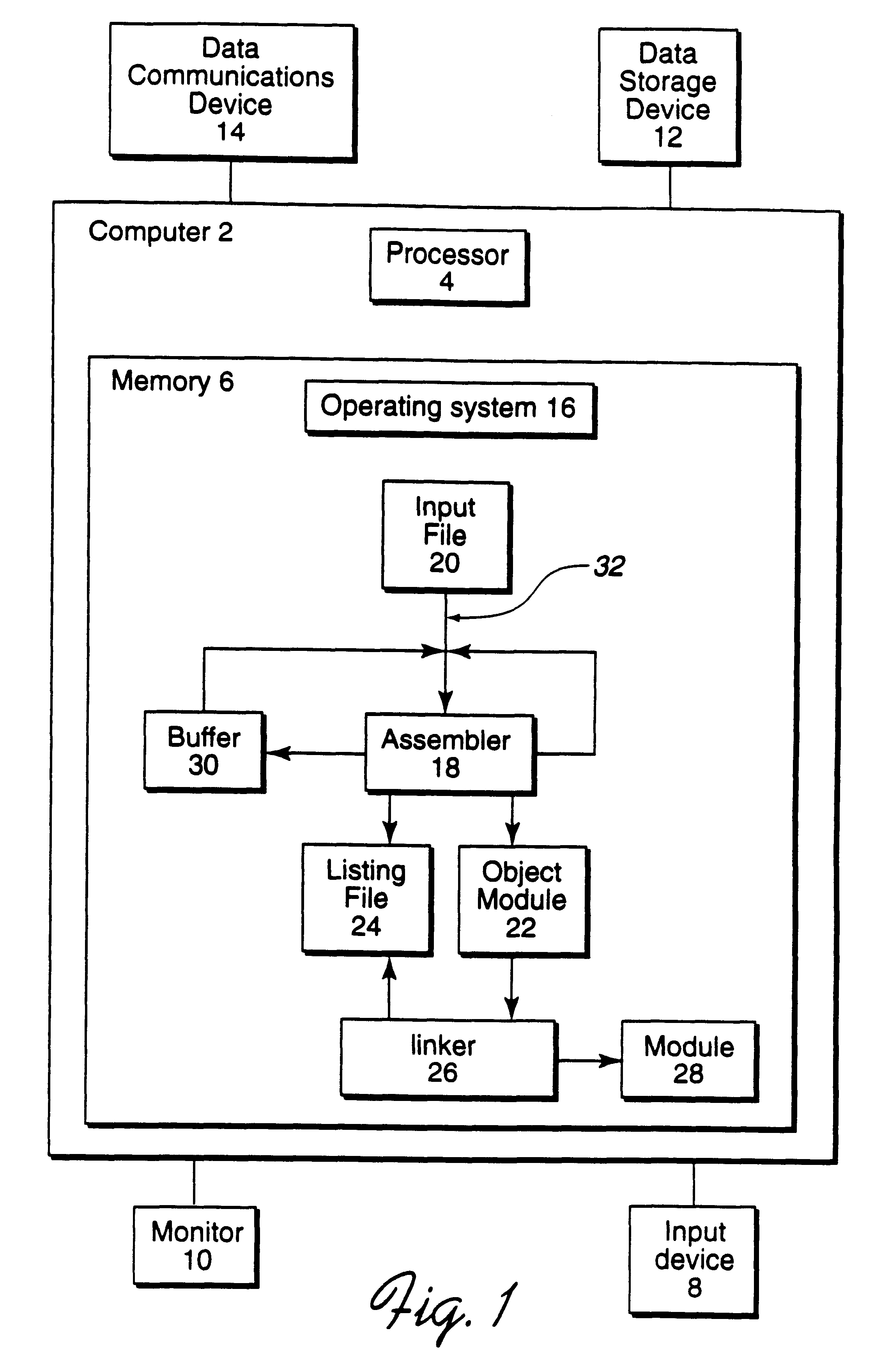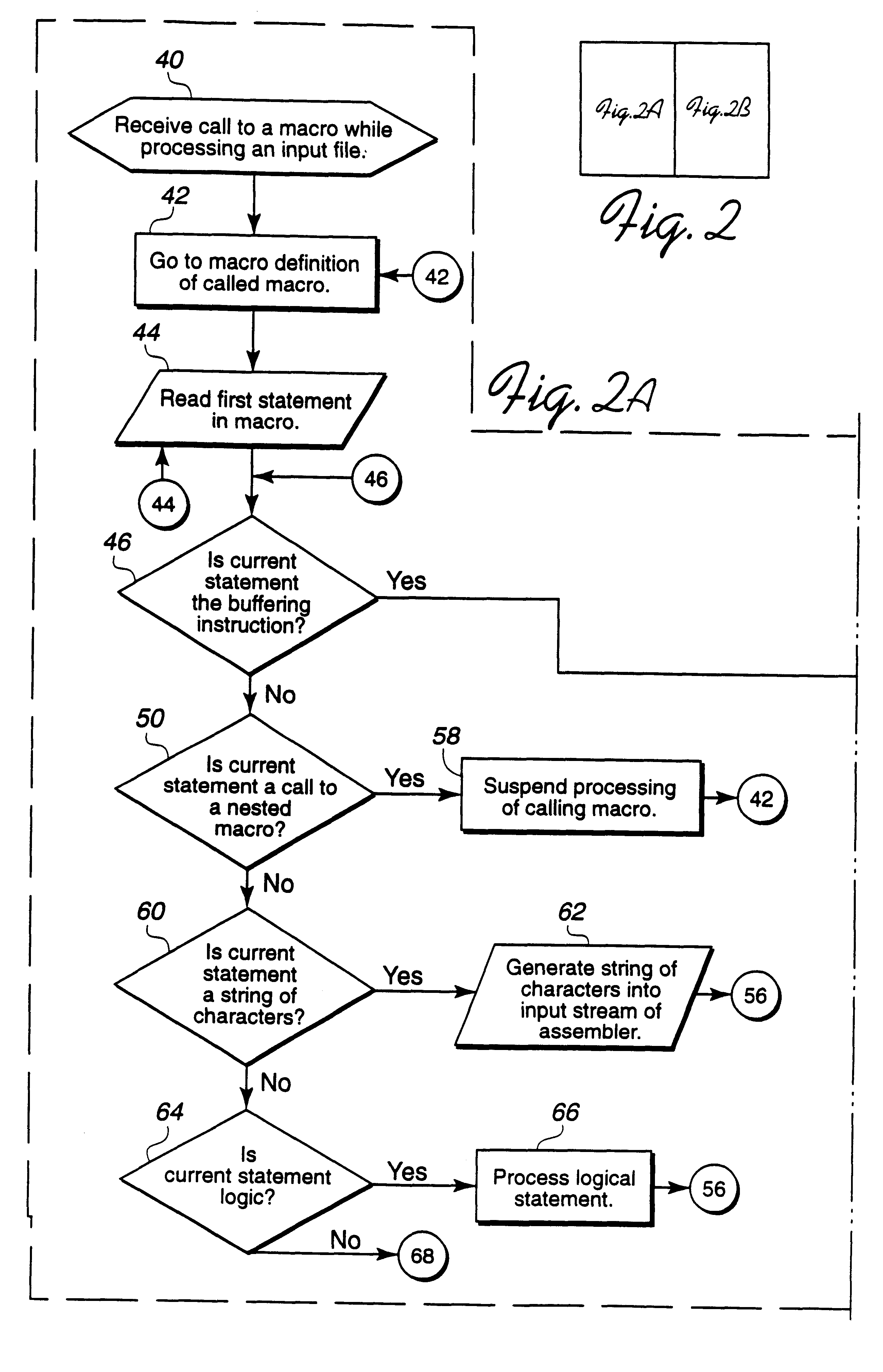Method and system for controlling the generation of program statements
a program statement and program technology, applied in the field of macro instructions, can solve the problems of inability to generate statements that could affect the analysis of the structure and content of a macro definition by assembler, inability to provide further control over the sequence of generated statements, and inability to create arbitrary forms of records. to achieve the effect of enhancing macro processing
- Summary
- Abstract
- Description
- Claims
- Application Information
AI Technical Summary
Benefits of technology
Problems solved by technology
Method used
Image
Examples
Embodiment Construction
To address the shortcomings of current macro processing techniques, preferred embodiments of the present invention disclose a method of processing program statements. An assembler program is provided a plurality of statements and processes the statements in the macro. For each statement the assembler program determines whether the processed statement is a buffering directive including a statement operand. If the assembler program determines that the processed statement is a buffering directive, the assembler program writes the statement operand of the buffering directive into a memory area. Otherwise, the assembler program generates the processed statement into a data stream. The assembler program generates the statements stored in the memory area into the data stream after processing the statements.
In further embodiments, the plurality of statements are associated with a macro and the statements comprise a macro call. The assembler program processes the macro call and provides a de...
PUM
 Login to View More
Login to View More Abstract
Description
Claims
Application Information
 Login to View More
Login to View More - R&D
- Intellectual Property
- Life Sciences
- Materials
- Tech Scout
- Unparalleled Data Quality
- Higher Quality Content
- 60% Fewer Hallucinations
Browse by: Latest US Patents, China's latest patents, Technical Efficacy Thesaurus, Application Domain, Technology Topic, Popular Technical Reports.
© 2025 PatSnap. All rights reserved.Legal|Privacy policy|Modern Slavery Act Transparency Statement|Sitemap|About US| Contact US: help@patsnap.com



